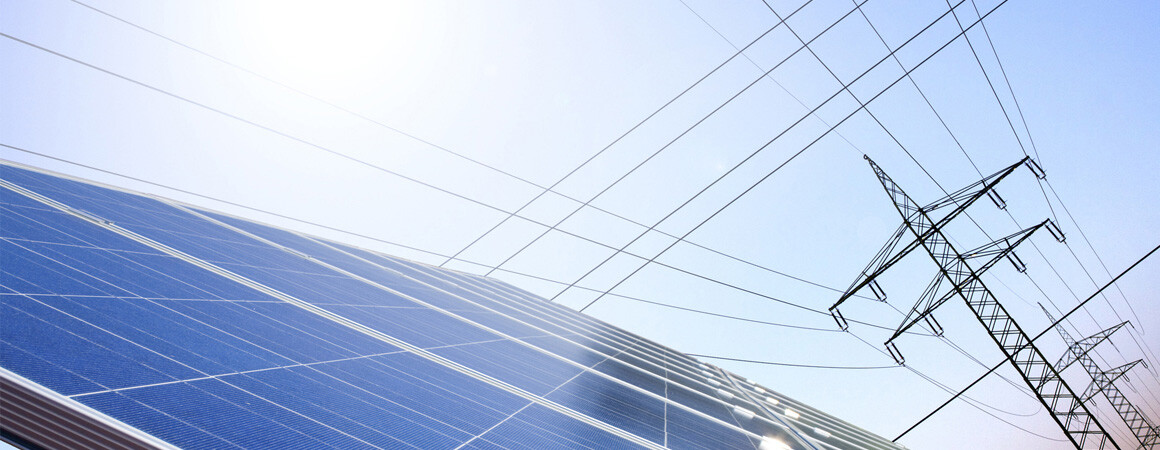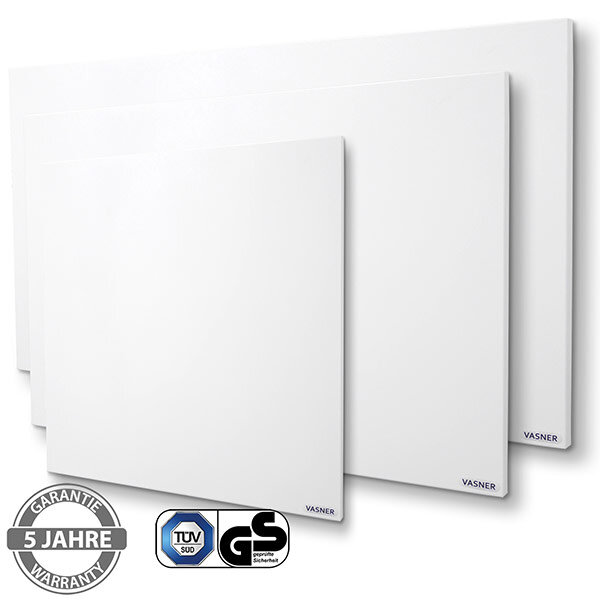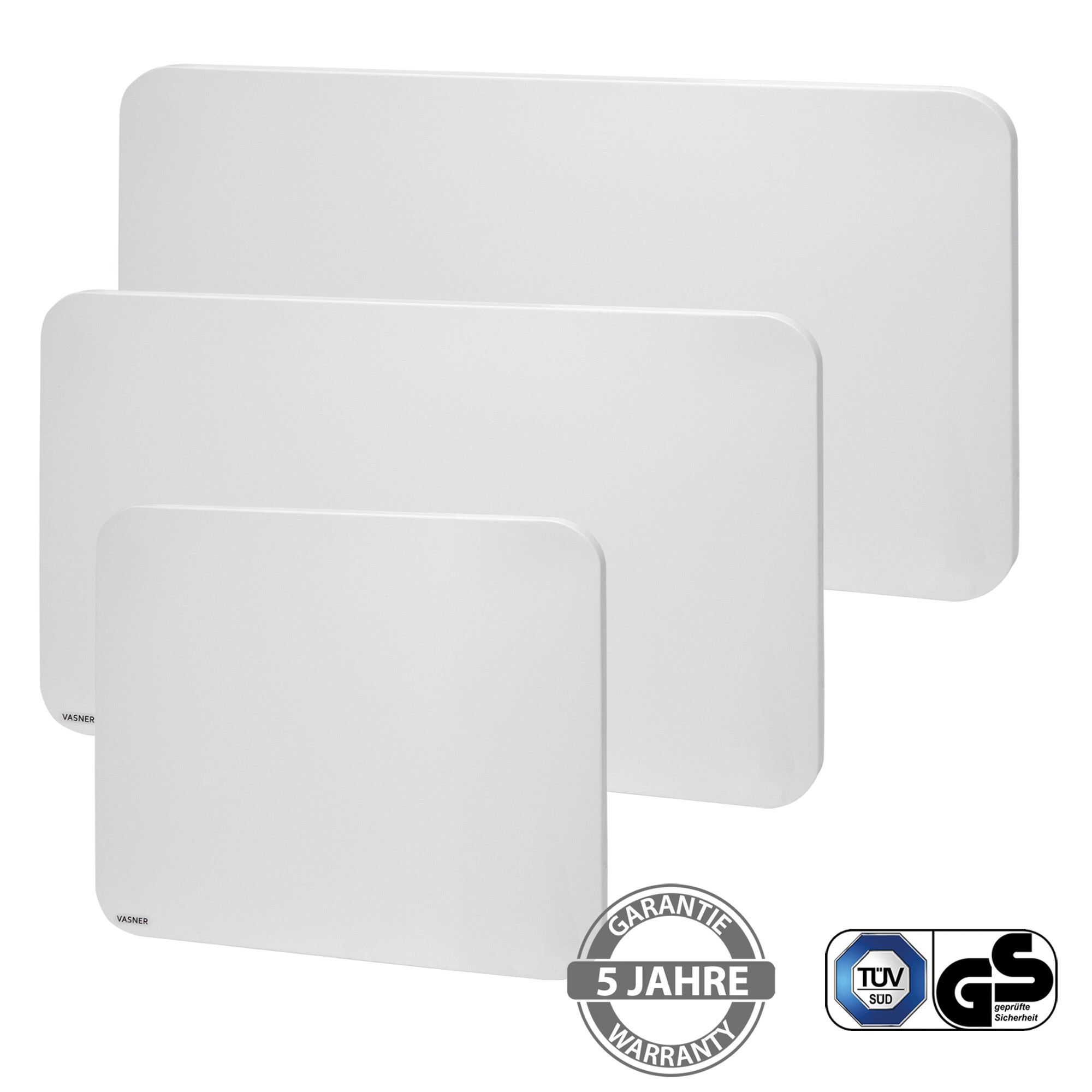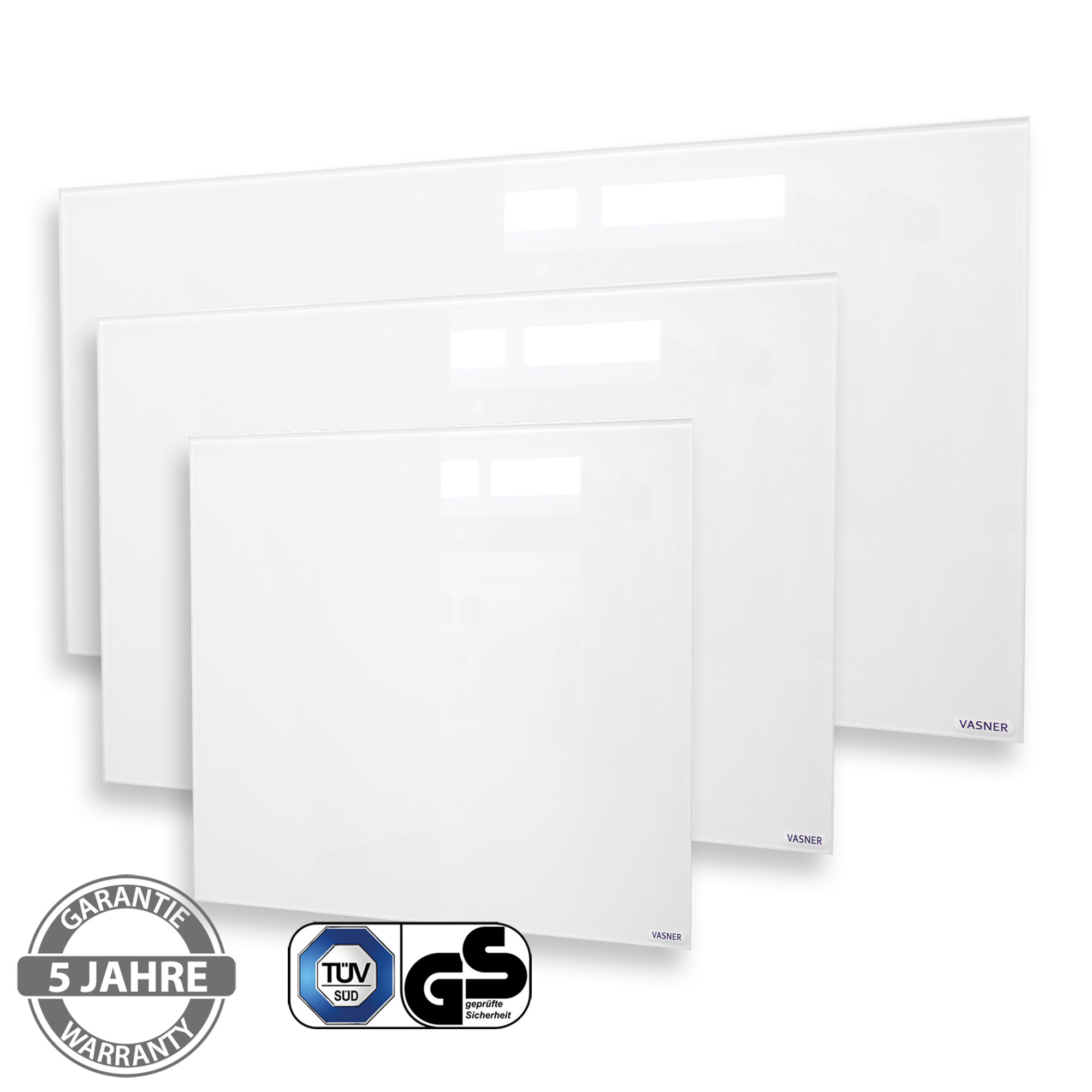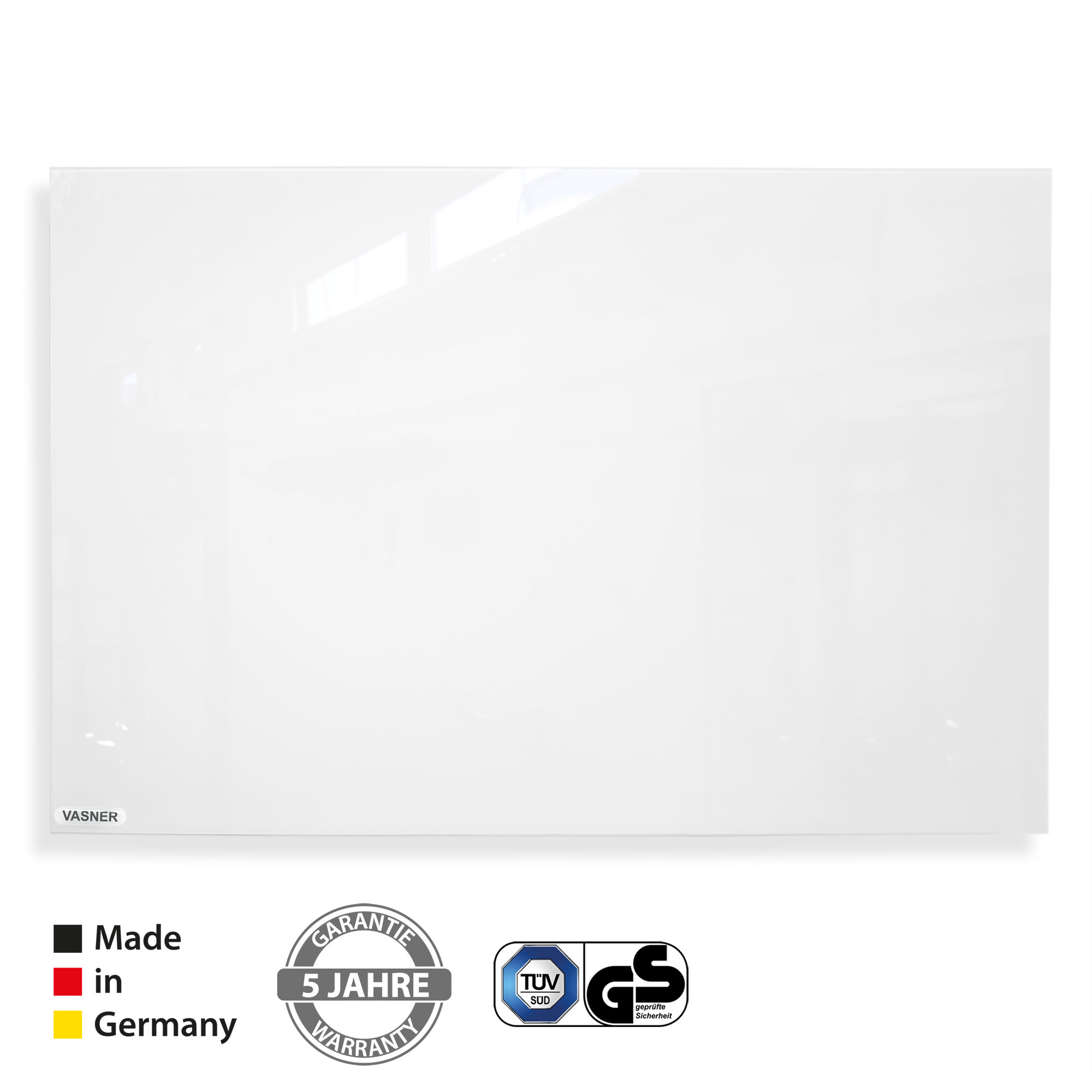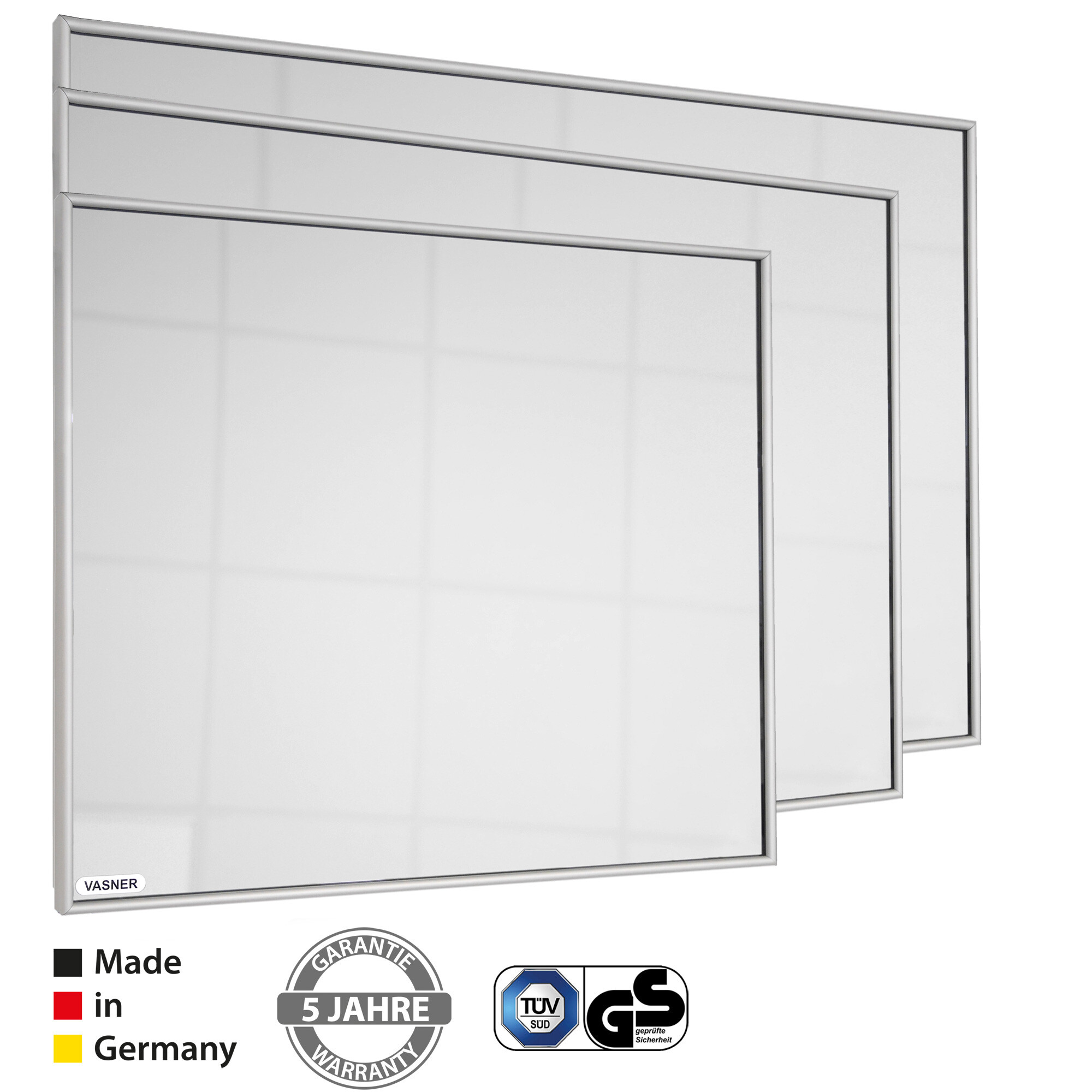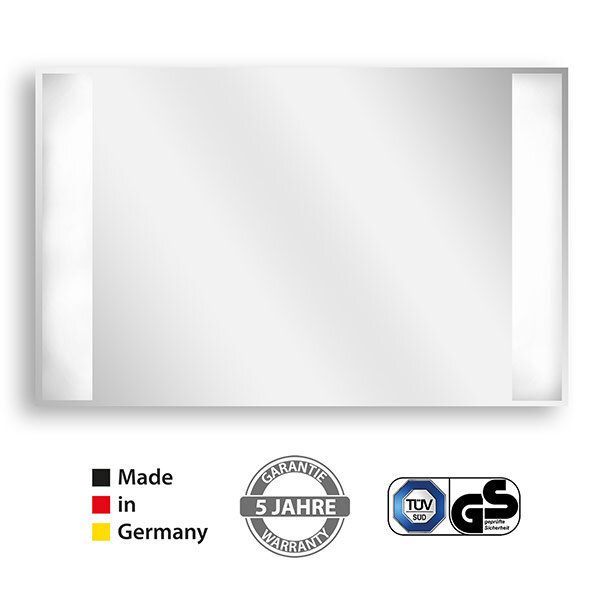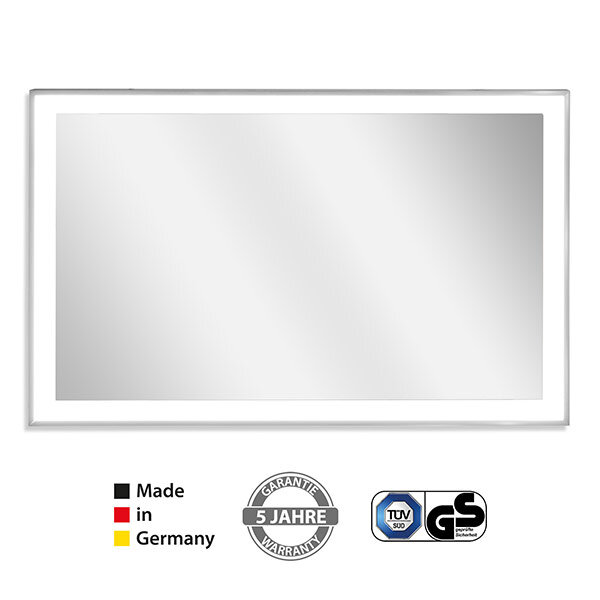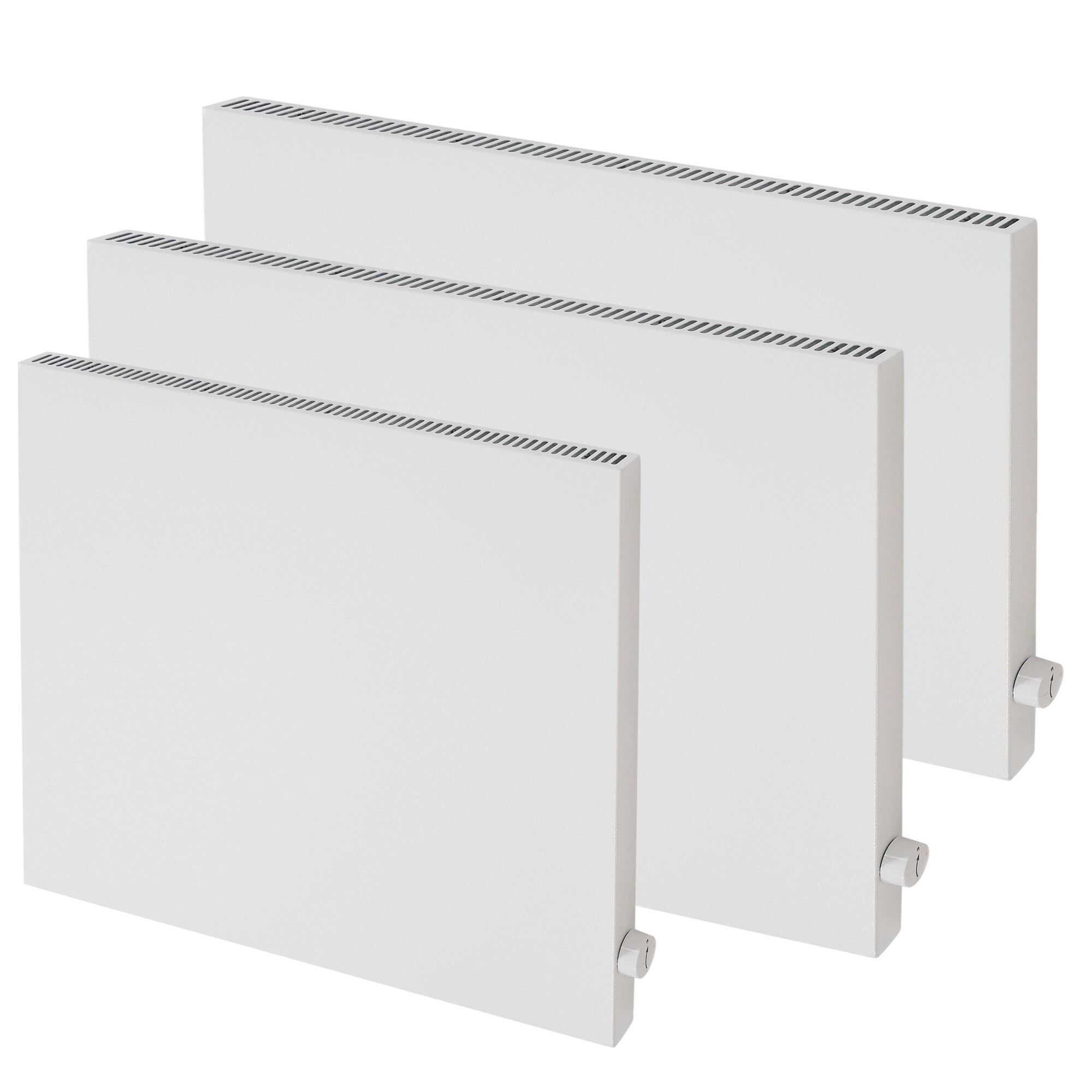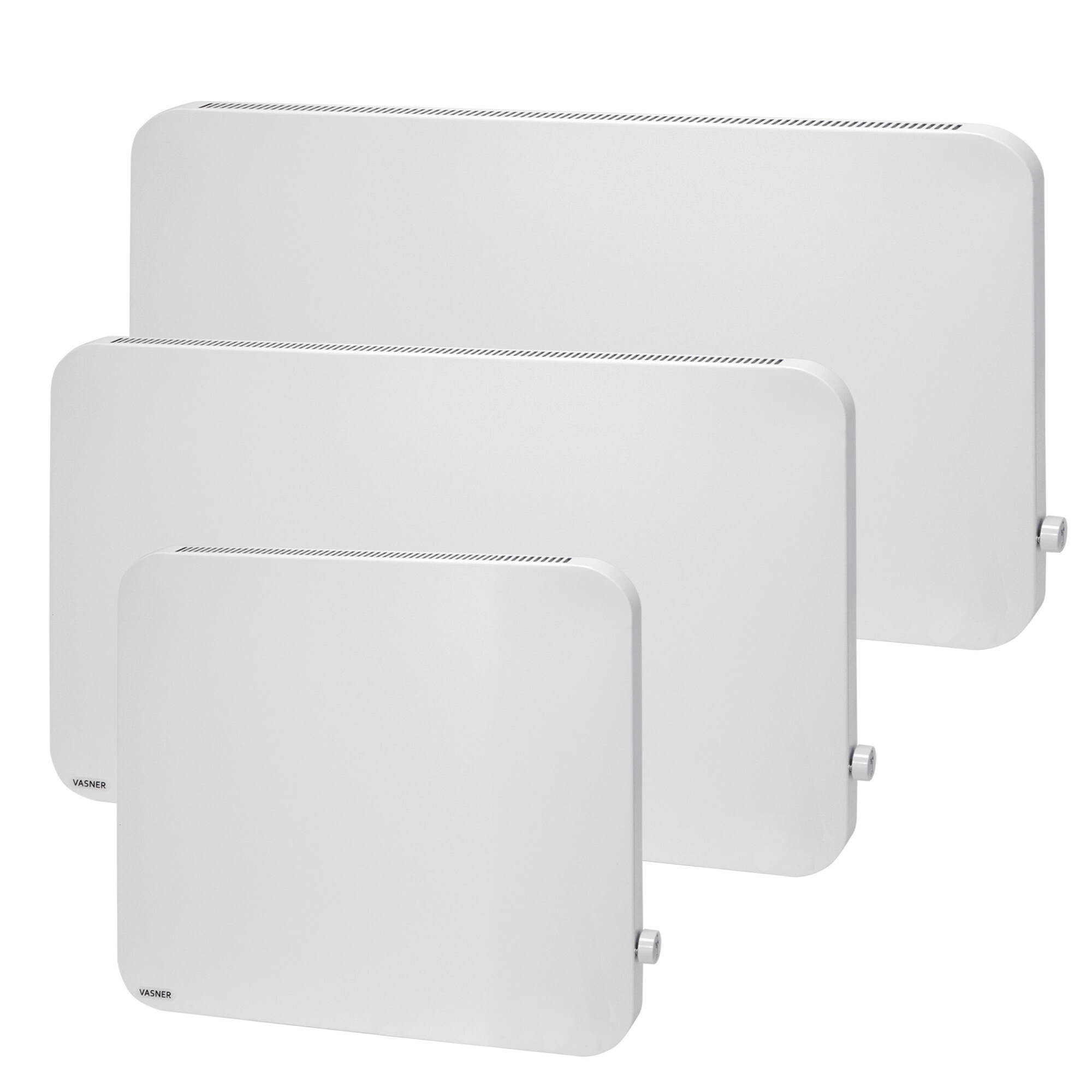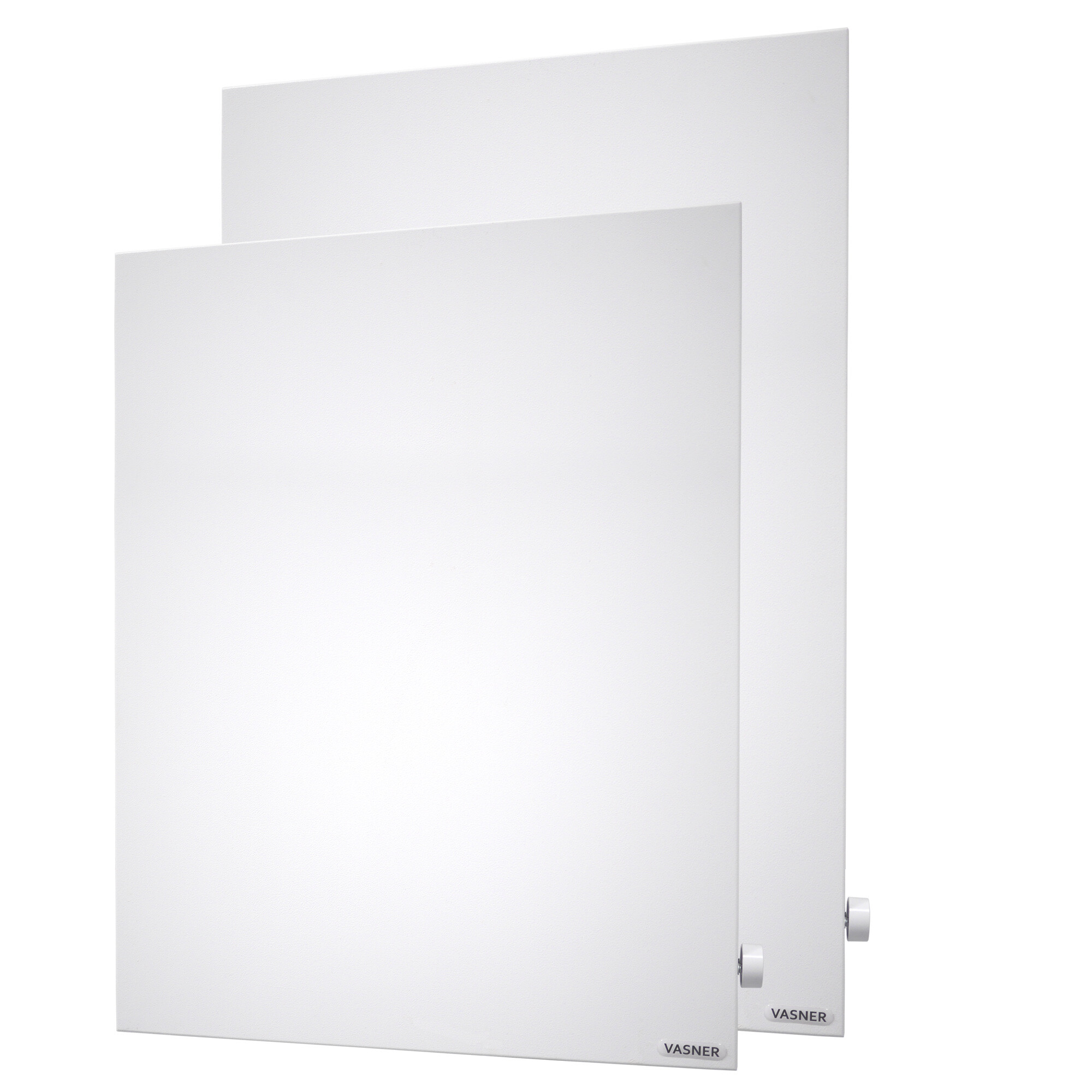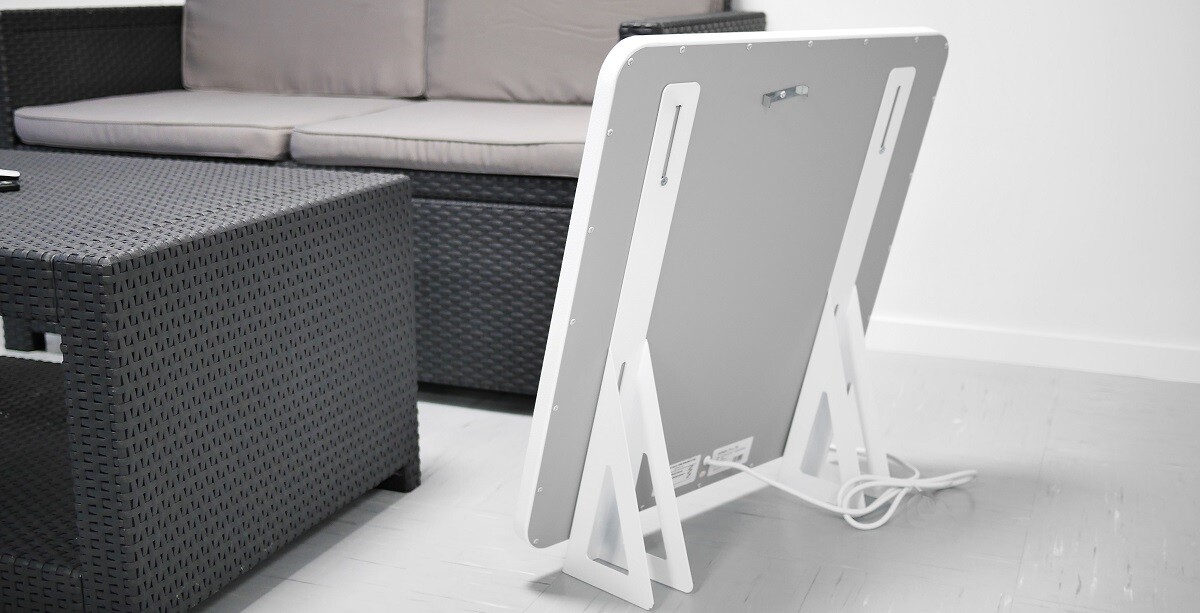VASNER Infrared Electric Heater – High-Quality Series for Efficient Warmth
VASNER – infrared electric heater manufacturer for efficient technology, exceptional quality and an elegant design.
As a manufacturer with years of experience in the infrared heating market, VASNER knows what is important when choosing and buying an electric heater. VASNER provides you with extensive knowledge gained from countless, diverse projects. Whether you are looking for an electric heater as a flexible auxiliary heater or as a standalone solution for efficient warmth – with VASNER as your premium manufacturer, you will receive in-depth support throughout your planning process. We offer individual advice on every aspect of your project and are always available to assist you with any questions you may have.
All the electric heaters in the VASNER product range meet highest standards, from their conception right through to their production. Advanced technology and an elegant design make the electric heaters efficient, high-quality products for cosy warmth. In the following comparison, you will find out how VASNER infrared panel heaters differ from other electric heating systems and which models are available. The sustainable alternative for the future.
Infrared electric heaters by VASNER.
German brand quality.

Do you need a personal consultation?
+49 (0)5246 – 93 55 625
Mon. – Fri. 7:30 – 13:00 // 14:00 – 17:00
We can be reached by phone as well as via our contact form. Our VASNER customer service team will be happy to assist you with individual calculations, general tips and extensive experience with infrared electric heaters and related products. Simply get in touch with us, we will be happy to help you.
Precise calculation
Support with your project
Premium quality
Ideal for private & commercial use
Well-founded price quotation
Reliable & sustainable calculation
Quick delivery
From 1 unit to large projects
Electric Heater Comparison 2022 » Overview of Efficient Heating Systems
In the face of the energy revolution, in which the share of ecological energy consumed in Germany is to be increased to 100% by 2050, more and more private households are striving to adopt a sustainable lifestyle. In the search for environmentally friendly alternatives for energy generation, the number of people who purchase green electricity or even produce energy with their own photovoltaic system is steadily growing. While in 2016, according to statista.com, 9,74 million German citizens purchased clean electricity from an energy provider, in 2019 the figure was already at 12,67 million. In this context, growing environmental awareness in Germany is spurring people to make all aspects of their lives more sustainable. Outdated types of heating, such as gas or oil heating systems, for example, should be replaced as quickly as possible and give way to newer, ecological sources of heat (such as an electric heater + green electricity). The current global political situation is also leading to rising oil and gas prices and confronting many households with the question of whether traditional heating with fossil fuels will still be possible at all in the winter of 2022. Worried about freezing during the cold season, more and more consumers are looking for a supplement or alternative to their oil or gas heater. Electric heating is one alternative to classic ribbed radiators that is steadily gaining popularity. In combination with green electricity, different types of electric heaters are often used as a stand-alone system or as an additional heat source. An increasing number of consumers want to buy a reliable and efficient electric heater.
Electric Heater Types
This guide looks at the advantages and disadvantages of different electrically operated heating systems and presents infrared heating in more detail as an ideal form of heat generation.
Electric heaters offer numerous advantages. In addition to special electricity rates for heating, electric heaters can be combined with renewable energy to produce warmth in an environmentally friendly way. However, not every device is suitable as the ideal heat source for your home. Each system has its own advantages and disadvantages, which should be examined carefully before you decide on a particular type of heating system and buy just any electric heater. This article serves as a comparison of the following electric heaters:
Buy an Infrared Electric Heater » Energy-Saving Electric Heating

Infrared electric heaters are increasingly being described in the media as the heating method of the future. This is due to their energy-efficient, progressive mode of operation. Instead of primarily increasing the room temperature by heating the air, the elegant radiators rely on a direct heating effect. This is inspired by the natural rays of the sun and is reminiscent of summer warmth. In fact, the electric heater emits infrared waves that cause a pleasant feeling of warmth when they reach the people, surfaces and objects in the room. As a result, you enjoy soothing radiant warmth without a long warm-up phase. The futuristic ceiling or wall mounted heaters offer numerous advantages from their low purchase costs to a decorative integration into your home decor, which is why more and more people are choosing them as their new heating system.
Infrared Panel Heater Models
Innovative Electric Heaters
Infrared Electric Heater Advantages
Advantages During Purchase and Installation:
Benefits of the Heating Effect of an Infrared Electric Heater:
Infrared Heaters for Cost-Effective Heating with Electricity:
Pleasant Side Effects of IR Electric Heaters:
Calculating the Running Costs of an Infrared Electric Heater
At an average electricity price of 29 cents / kilowatt hour, a 600 watt infrared heater generates the following heating costs when you heat electrically:
0,6 kW * 0,29 € / kWh ≈ 0,17 €
The hourly electricity costs for an infrared electric heater with 600 watts are barely 17 cents.
Here you will find VASNER’s calculator for heating electrically with infrared:
Electric Heater Test: Electricity Consumption of Infrared Panel Heaters in a Single-Family Home
In a single-family house in Gütersloh, the old oil heating system was replaced with a combination of photovoltaic and infrared electric heating. This enabled the family to reduce their ongoing heating costs. A detailed cost breakdown and energy-related information on the house in question can be found on the dedicated project page.
Conclusion: Infrared Electric Heater
- Very environmentally friendly and cost-saving electric heating using green electricity / photovoltaics
- Low purchase costs
- Easy installation compared to other types of heaters
- Can be flexibly controlled with the thermostat of your choice
- Pleasant heating effect (direct, natural warmth)
- Beautiful, ultra-flat design
- Ideal electric heater for bathrooms / damp areas
The Advantages and Disadvantages of an Oil Radiator as an Electric Heater
At most, this electric heater makes sense as a supplementary heating system
An oil radiator is used as a supporting electric heater mainly to produce additional heat. This can be the case, for example, when the fluctuating temperatures in the transitional period between summer and winter lead to a cold flat, but you don’t want to switch on the central heating yet. The electric radiators are partly available for a price of less than 100 EUR. However, the operating principle of devices that are filled with oil is associated with numerous disadvantages, so that they should never be used as the sole source of heat for your home.
How does the Electric Heater Function?
For the heating process, electricity is used to warm up the thermal oil inside the unit. The oil is then distributed to the heating fins of the radiator. The oil filled fins then release the warmth into the room. Since this process takes place without the use of a fan, an oil radiator saves you from the downsides of convection. Thanks to this electric heater, no dust is stirred up and there is no unpleasantly dry air. In addition, a relatively quiet operation is possible without the use of a fan. However, many users complain about an annoying crackling noise that often occurs when using older devices.
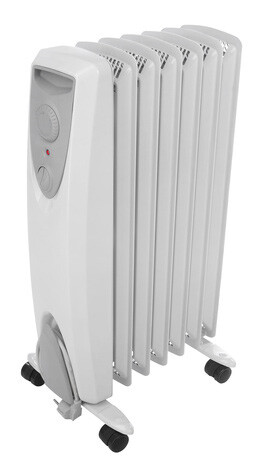
Too Sluggish to Support Central Heating
Since the oil in the auxiliary electric heater must be fully warmed up before an increase in room temperature is noticeable, the device works comparatively inefficiently. Unnecessary amounts of valuable energy are burnt up in the waiting period without benefiting from cosy warmth. So if a very cool room is to be heated, it may take some time. Thus, oil radiators even lose their appeal as supplementary heaters, especially if you would like to use them to bridge the long warm-up phase of a sluggish central heating system.
Often not Suitable for Bathrooms
Another factor that makes the flexible use of oil radiators difficult is the low IP protection rating of many such electric heaters. Their lack of moisture resistance prevents the heaters from being used in certain rooms of your home. For example, you often cannot heat your bathroom or basement with this type of electric radiator. In addition, the units require quite a lot of maintenance, as their heating fins provide an ideal ground for dust due to their many grooves and surfaces. Regular cleaning is therefore necessary to avoid the unpleasant smell of burnt dust caused by the heater.
Conclusion: Oil Radiator
- Inefficient electric heater
- Long warm-up phase
- Possible crackling noise
- Regular cleaning required
- Radiators are not always suited for use in the bathroom
The Electric Heater as a Temporary Supplement » Fan Heaters
Another electric heater that should really only be used as an auxiliary heater is a fan heater. As is well known, these devices work by releasing heat into the room with the help of a fan, which brings into effect the well-known disadvantages of convection:
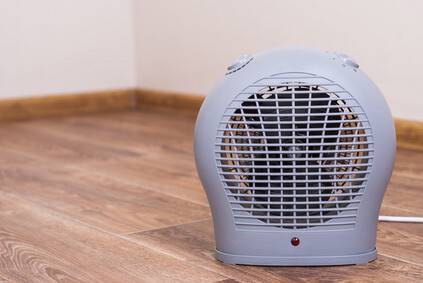
When heating with electricity, this alternative should only be used as an occasional backup, if at all. As a primary heat source, you should rather buy a more efficient electric heater. For a permanent heat supply, there are other electric heaters that convert the energy used into heat in a more targeted way.
Conclusion: Fan Heaters as Electric Heaters
- Inefficient heating of the air (like a convector heater)
- Disturbing operating noise due to the fan
- Electric heater stirs up dust
- Warm air generated by heater dissipates quickly
Provide Additional Warmth with Electric Underfloor Heating
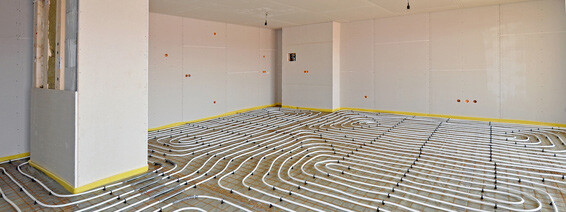
Method of Operation
Although electric underfloor heating systems function more quickly than similar systems operated with hot water, gas or oil, their warm-up phase is relatively long in contrast to other electric heaters. This is due to the construction and functioning of the area-wide radiators. After all, the heating mat or foil is laid under the floor covering – such as parquet, laminate or tiles. Electric current is then used to heat the integrated heating elements and the warmth spreads over the affected area. Subsequently, the heat rises upwards through the floor.
Good Insulation Required for the Underfloor Electric Heater
This described process successively increases the room temperature. Thanks to the extensive installation of the electric heating wires under the floor, the heat spreads quite evenly in the room compared to other types of heaters. However, it takes some time before the pleasant warmth at your feet develops into a cosy room temperature. If you would like to successfully heat with this system, professional insulation under the built-in wires is urgently required. Otherwise, the heat produced will simply escape into the ground.
The Heat Rises Upwards Under the Ceiling
In addition to the complex installation and long warm-up phase, the special electric heating technology has other weaknesses. (Electric) underfloor heating, for example, is not suitable for people with circulatory disorders or a susceptibility to varicose veins. This is because the intensive heating of the feet from below can lead to an increase in the associated complaints. In addition, the lack of heat spread to other rooms in the house is often criticised. This is because the warmth from the electric heater maintains its vertical course and continues to rise upwards under the ceiling instead of expanding horizontally as with other types of heating. Without adequate insulation, therefore, the heat generated and the energy used is lost relatively quickly. For these reasons, electric underfloor heating should not be used as the main system, but rather for additional warmth. Otherwise, the power consumption of the electric heater may be too high.
Conclusion: Electric Underfloor Heating
- Expensive to buy
- Complex installation compared to other types of electric heaters
- Comparably sluggish heating effect
- Good insulation required to prevent heat from escaping quickly
- Even heat in the room
- Only suitable as a supplementary heater due to its inefficiency
Obsolete Electric Heater » Night Storage Heater
The electric heater with heat storage was originally intended to enable low-cost electric heating. To do this, the storage unit is charged at night or at certain times in the afternoon when electricity is cheaper. The heat stored at night is then used throughout the day to heat the home. Despite the well thought-out basic principle, storage heaters have several weaknesses, which is why more and more consumers are replacing outdated radiators with more efficient electric heating innovations such as infrared panel heaters:
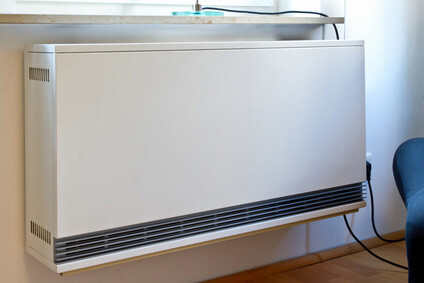
Due to the carcinogenic material inside the device, you must follow certain laws when disposing of night storage heaters.
Conclusion: Electric Night Storage Heater
- Low electricity tariffs for cheaper electric heating are becoming increasingly rare
- Comparably inefficient for an electric heater
- Limited storage volume
- Inflexible temperature control
- Convection: Dry air + whirled-up dust
- Contain hazardous substances
Sustainable Electric Heating » The Benefits and Flaws of a Heat Pump
The Electric Heater Utilises Natural Ambient Heat
With this special type of electric heater, the power consumed is not converted straight into warmth by means of heating wires, as is the case with direct electric heating systems. Instead, the electricity is used to operate a pump. The pump draws natural heat from the environment (either from the ground, the groundwater or the air) and increases its intensity while transporting it to the heating system in your home. The warmth extracted by heat pumps can then be used to heat your home or to provide hot water.
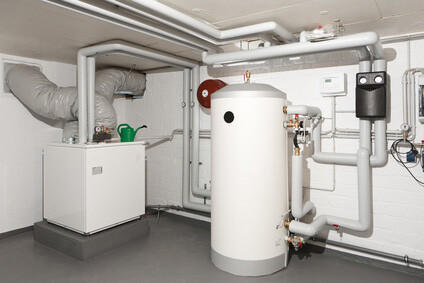
Elaborate Installation of the Electric Heating System
Although the environmentally friendly system does not require fossil fuels or produce Co2 emissions when combined with green energy, the electric heater is not the ideal heating solution for every home. This is because, on the one hand, the installation of the system is quite complex and expensive, and on the other hand, the special heating system requires certain criteria that not every property fulfils. Depending on the type of heat pump, for example, a certain groundwater level, a special soil condition or an airtight building envelope are necessary. In addition, depending on the drilling depth, permission must first be obtained from the lower water authority or the mining authority.
Not Always Maximally Efficient
In practice, this advanced form of heating is not always as efficient as hoped. To assess the economic efficiency of heat pumps, the annual performance factor of electric heating is used. This expresses the ratio of the energy invested to the heat extracted. If this value is below 4, the system is considered inefficient. Since the required efficiency is unfortunately not always achieved by the electric heater, valuable green electricity should rather be used for other purposes for the sake of the environment.
Conclusion: Heat Pump for Electric Heating
- Environmentally friendly, especially when powered with green electricity
- Use of natural ambient warmth for heating
- → Perfect for heating economically with electricity
- But: Expensive, complex installation
- Unfortunately not suitable for every household that wants to heat electrically
Conclusion: Which Electric Heater Should You Buy?
Pros and Cons of the Different Heating Methods
| Electric Heater Type | Pros | Cons |
|---|---|---|
| Infrared panel heater |
|
|
| Oil radiator |
|
|
| Fan heater |
|
|
| Electric underfloor heating |
|
|
| Night storage heater |
|
|
| Heat pump |
|
|
Do you still have questions concerning electric heating?
For more information and advice, please call us: +49 (0)5246 – 93 55 625
Photo credit: Adobe Stock
File: #11162024 | Author: Simon Kraus
File: #32684215 | Author: virtua73
File: #36897002 | Author: Max Diesel
File: #126467794 | Author: kuchina
File: #72712076 | Author: photo 5000
File: #50192402 | Author: Jürgen Fälchle
File: #25032155 | Author: Gerd
File: #59178515 | Author: Christian Hillebrand
File: #202295069 | Author: Dariusz Jarzabek
File: #166907388 | Author: SimpLine
